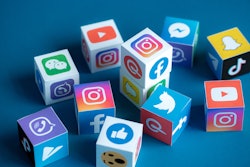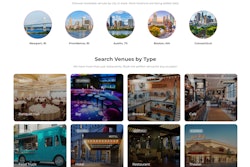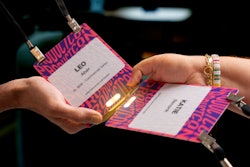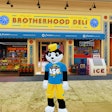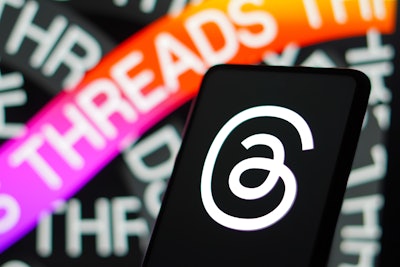
Meta's so-called “Twitter-killer” app, Threads, shook up the tech sector on July 5. The text-based social media app rivals Twitter in many ways, allowing users to write posts up to 500 characters with the option to include photos, videos up to five minutes long, links, and GIFs.
It’s closely tied with Meta’s ultra-popular Instagram platform, requiring users to have an account on the photo-sharing site in order to create a Threads account. From there, users are free to follow (or block) others, as well as like and repost, plus chat and share posts via direct message.
Within 24 hours of its earlier-than-expected launch, Meta boss Mark Zuckerberg boasted that the app already touted more than 30 million accounts—via a Threads post, of course.
Although creating another social media account might seem less than ideal, it’s never a bad idea to be an early adopter of emerging tech—especially one that’s likely to be as popular as Threads. (After all, the app is so intertwined with Instagram, which has a massive daily user base of more than 500 million.)
And while there’s still a promise of creating a friendly environment that remains free of bots, spam, or ads, it can be a great tool for event profs.
But Threads isn’t the only new app on the block. There’s also Bluesky Social, an invite-only social platform created by Twitter co-founder Jack Dorsey. The app is still in beta testing, and it's unclear when it will be ready for field testing. There's also Spill, a Black-owned Twitter alternative that launched in mid-June, and Mastodon, an open-source social network.
Here’s what industry experts are saying about these platforms, plus how they’re using them to better their business and reach—and if they’re ditching Twitter in favor of these new social media sites…
Cristina Angeli, the LA-based global managing director at DesignScene, a global creative brand activation agency:
"Listen, I’m old enough to remember a world when none of these channels existed. I’m also a former Tweep that was canned by Elon. But what is really amazing about these channels that every individual, company, or brand has at their fingertips (that in the olden days was out of reach) is access. Access to instantly—and for free (basically)—share your brand, story, and moments. The ability to “@” people and start conversations, engage and push, and control your own narratives or counter others.
The other thing I think about is inclusivity: being able to share experiences that in the past were behind closed doors or only available to the elite. Think about how fashion shows have become more public, and the incredible creativity and production that regular folk now get to witness, be part of, and be inspired by.
At DesignScene, we use these tools for a few reasons: of course to showcase our work at tentpoles big and small, but to also communicate our company capabilities and culture, inviting new connections, clients, followers, and future employees to see how we work, where we work, and what inspires us.
On Twitter, sigh, I really don’t know if Twitter is here to stay. I have very personal opinions on that. It was a magical place and had incredible possibilities, but really is that not true about any platform? There are always possibilities."
Brooke Blann, senior digital project manager at Game Seven Agency, a full-service creative and experiential agency for the sports, music, and culture industries based in New York:
"Since Threads is ultimately connected to users’ Instagram accounts, it is a seamless integration for avid users. That being said, Threads offers a unique opportunity to take what you have already built on Instagram and transfer it. So, when you create an account, people can choose to pre-follow so you’ll already have followers once you create a profile. For events, you ultimately want to be able to connect with people cross-platform to reach a larger audience, and this does just that.
On Threads, we are experimenting and AB testing. This platform is new, so it’s fun to get creative and push the limits to see what the audience is engaging with. It also caught a lot of people by surprise, so while everyone is thinking about a long-term Threads strategy, it really feels like every brand is bringing their Twitter personality to a mostly Instagram audience.
For Bluesky, we are awaiting final launch, but as of now, we are getting familiar with the platform so we can utilize it best once it opens to the public.
The main thing [to note] that differentiates Bluesky from the other platforms is decentralization. This is meant to give the user control over the content they are exposed to rather than a centralized algorithm. This can work well for events that are targeting people who have interest, but identifying those users may be more difficult than casting out to a larger audience."
Racquel Guyton, founder and chief experience officer at St. Germain Creative, a Miami-based experiential event marketing agency:
"I have more of a subjective take on Threads. Instagram and other social media outlets have this kind of performative branding and very manicured aspect where you can control the perception of how a brand is viewed. Threads kind of knocks off the performative 'salesy' aspect and really helps users get an idea of how a brand or a person 'sounds,' and how they think. People's brains resonate with dialogue—whether spoken or read. Words are the basis for human connection despite the language. Threads is here to stay! The only downsides: the app having access to private information and the lack of being able to categorize conversations through the use of hashtags, which is an imperative metric in events.
I am not yet on Bluesky or Spill (I have an Android, and it’s not yet available). One of the reasons Threads will outperform these apps is availability. It requires an invitation and one is available only to iOS users. Inclusivity matters."
John D’Adamo, senior account executive at Grip, a London-based, artificial intelligence-powered event and networking platform:
"The events industry can benefit from Threads because it easily taps into Instagram’s audience. That’s why it has 100 million users already. So whereas Instagram will continue to be used for more visual impact, Threads could be utilized to generate engagement and awareness with the written word to, one, generate buzz pre-event and, two, host “live-Thread” sessions during an event to generate responses and, three, share post-event recaps and content."
Anca Platon Trifan, founder and CEO of Tree-Fan Events, an event management and production company based in Idaho:
"The internet was more than excited over the launch of Threads [than Bluesky] and that was evident in the high adoption rate numbers. It’s fresh to see a platform for event profs where they can become humans and take off their professional LinkedIn masks and just interact like they would with someone they know—free of inhibition and fear of being seen as less professional. I like that. If we can bring that into our events so our audience can share their real thoughts about the event they hope to attend, provide real feedback on the sessions they've attended, and ask real questions during the event, I think we'd all benefit from that type of authenticity. Yes, giving such a megaphone to the masses can feel scary, but it can also provide opportunities for learning and growth.
For us event profs, I'd love to see more of that collaboration and openness being fostered as we continue to lean into it and build community around it. The initial vibe was positive and empowering; let's keep it that way.
I am not on Bluesky at all, and I am using Twitter very little—just as before because I didn't feel like Twitter was very conducive for a community. But with Threads, when you join, your community is connected to you right off the bat, which makes the transition so much smoother."




